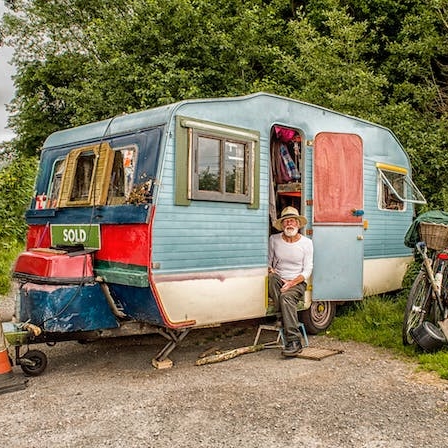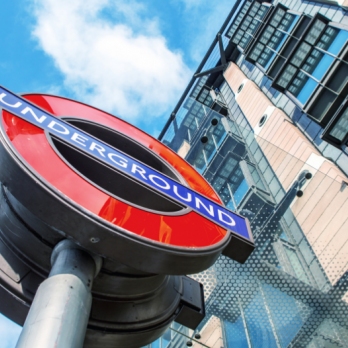Dilapidations: nerve RAACing
The potential risks associated with reinforced autoclaved aerated concrete (RAAC) in public buildings, notably schools, has received much attention in the media. The potential implications for privately-owned buildings is, however, only starting to be assessed.
In this article, we consider why RAAC could be a problem for commercial landlords and tenants, and what steps they might take if this material is found at their premises.
What is RAAC?
RAAC is a lightweight form of concrete used in construction between the 1950s until the mid-1990s. As well as public buildings, it was also used in offices, factories, warehouses and other properties. It is mainly found as precast panels in roofs (commonly flat roofs, but sometimes pitched) and occasionally in floors and walls.
Although called “concrete”, RAAC is much weaker than traditional concrete due to the way it was made. It has no coarse aggregate, and contains bubbles (like a malteser). It was used because it was lighter, and cheaper and quicker to install. However, it only has a lifespan of around 30 years and is susceptible to cracking, corrosion, deflection (sagging and bending) and structural failure, particularly when exposed to water.
The potential safety issues were first reported in the 1980s, but more urgent warnings were issued in 2019 following the failure of a RAAC panel within an operational school. Those warnings highlighted that panels could collapse suddenly and without warning, without any visual indication that the panel was in poor condition.
Why might RAAC be a problem for landlords and tenants?
It might be tempting to approach the RAAC issue by asking who is contractually responsible for keeping the premises in repair. Whilst an important question, we would suggest that health and safety considerations should come first.
From a health and safety angle, the risks associated with RAAC should be a concern to both landlords and tenants.
If landlords have an express or implied right to enter premises to carry out works of repair or maintenance, they may in certain circumstances owe a duty under the Defective Premises Act 1972 to take reasonable steps to keep occupiers and others reasonably safe from personal injury or damage to their property.
Commercial tenants will very likely have duties to ensure the health and safety of employees and others that have access to the premises, under the Health and Safety at Work Act 1974 and other legislation.
In addition, landlords and tenants will obviously want to guard against the risk of damage to their property and business interests.
Both will want to know who might have to pay to fix or replace any RAAC panels if defects are found.
Immediate practical steps
The first step is to identify whether a building has RAAC. Although anyone may be able to do this (see DfE: Identification guidance), it will often be sensible to engage a building surveyor or structural engineer.
If RAAC is present, a surveyor or structural engineer can carry out a survey and risk assessment.
Many RAAC panels may still be in reasonable condition, in which case the risk can be managed through regular inspections and preventative maintenance.
If, however, there is evidence that panels have defects, the surveyor or engineer can advise on the level of risk and the remedial action required.
In addition, it would be sensible for landlords and tenants to check their insurance policies to see what, if any, cover they may have in the event of damage caused by defective RAAC.
Who is responsible for repairs?
Most claims against developers that built properties using RAAC will likely now be out of time (although the Building Safety Act 2022 introduced extended limitation periods that should be checked). For many commercial properties, this may leave only contractual claims under the lease.
Who is responsible for repairing defective RAAC panels will depend on the wording of the lease in question.
Broadly, if a tenant has a tenancy of the whole of a building on a full repairing lease, it may be responsible for repairing any such defects.
If the premises form part of a larger building or estate, or the tenant has an internal repairing lease only, the landlord might be primarily responsible for structural and other repairs but, depending on the terms of the lease, it may be able to recover some or all of the costs through the service charge.
It will be important for both landlords and tenants to understand what the lease says.
Inherent defects
Tenants sometimes believe, incorrectly, that they can never be required to repair, or pay to repair, a defect in the design or construction of a building, or the materials used, which existed, but was not apparent, when the property was built.
If an inherent defect causes damage to the property, tenants may be liable to put right the defect, if that is the only sensible way of addressing the consequential disrepair.
Tenants should not, therefore, think that they can avoid liability just because RAAC was used when the building was constructed.
Possible claims during the lease
It is only if there are defects in the RAAC panels that cause the premises to fall below the standard of repair required by the lease, that a possible claim might exist. If there is no disrepair, there is no breach and no claim.
If the RAAC panels are in disrepair, however, there may be various remedies whilst the lease is continuing.
If the landlord is responsible for carrying out repairs, but does not do the work once notified, the tenant has several options. The main remedies are to bring a claim for specific performance requiring the landlord to carry out the works, or to carry out the works itself and seek to recover the costs by way of deduction or set-off against sums due to the landlord (unless the lease prohibits this).
If the tenant is responsible, and is in breach, the lease might contain a “Jervis v Harris” clause giving the landlord the right to enter the premises, carry out the repair works itself and recover the costs from the tenant as a debt. The landlord might, alternatively, bring a claim for specific performance, or it could threaten forfeiture (although this may not be attractive, because it might not fix the underlying problem if the tenant does not remedy the breach).
Possible claims at the end of the lease
The general position is that a landlord may claim damages if a tenant fails to hand the property back in the condition required by the lease.
However, the amount of compensation a landlord can recover is limited by section 18(1) of the Landlord and Tenant Act 1927. Firstly, damages cannot exceed the amount by which the value of the landlord’s interest is reduced as a result of the tenant’s breach. Secondly, no damages will be recoverable if the premises are to be pulled down or structural alterations are to be carried out shortly after the lease ends.
Arguments could potentially be had about this. For example, if the value of the property is reduced because of the mere presence of RAAC panels, irrespective of their physical condition, it could be argued that the reduction was not caused by the tenant’s breach. If it is clear that the landlord would have to carry out major structural works to replace the RAAC panels anyway, the tenant may argue that it is not liable under the second part of section 18(1).
Section 18(1) does not, however, apply to certain types of claim. It does not, for example, apply to a claim in debt. This might mean that some landlords will prefer to try to exercise their rights under a Jervis v Harris clause during the term, rather than take their chances with a claim at the end of the lease. Nor does it usually apply where the lease says the tenant must comply with statutes, such that some landlords might try to bring claims under this type of covenant. It also does not apply to claims for reinstatement, which might be relevant where the tenant themselves installed the panels.
WolfBite
As with public buildings, the starting point for commercial properties will be to identify, and risk assess, buildings that have RAAC. Given that the presence of RAAC could become a problem for landlords and tenants, there is a strong argument for them to work together, or to at least communicate with each other closely.
Alongside this, it will be important for both landlords and tenants to understand who might be responsible for keeping RAAC panels in repair, and who might be liable for the costs of any potential remedial works both during and at the end of the lease.
Advice from experienced building surveyors, and lawyers, will be key.
LONDON
One Pancras Square
King's Cross
London
N1C 4AG
Phone: +44 (0) 207 846 4146
E-Mail: hello@hagenwolf.co.uk
Web: www.hagenwolf.co.uk
LEEDS
One Park Row
Leeds,
West Yorkshire
LS1 5AB
Phone: +44 (0) 113 856 0446
E-Mail: hello@hagenwolf.co.uk
Web: www.hagenwolf.co.uk
Hägen Wolf Limited (trading as Hägen Wolf) are solicitors of England and Wales authorised and regulated by the Solicitors Regulation Authority SRA Number 659328. Details of the Solicitors Code of Conduct can be found at www.sra.org.uk Hägen Wolf Limited is registered at Companies House No. 10830060. Registered Office: One Park Row, Leeds, LS1 5HN. We use the word 'partner' to refer to a shareowner or director of the company, or an employee or consultant who is a lawyer with equivalent standing and qualifications. *(by appointment only – we do not accept service at this address)
Contact us
Give us a call on 0330 320 1440 or send us an email at hello@hagenwolf.co.uk or fill in the boxes below and pop over a quick message and a member of the team will get back to you as soon as they're free.




